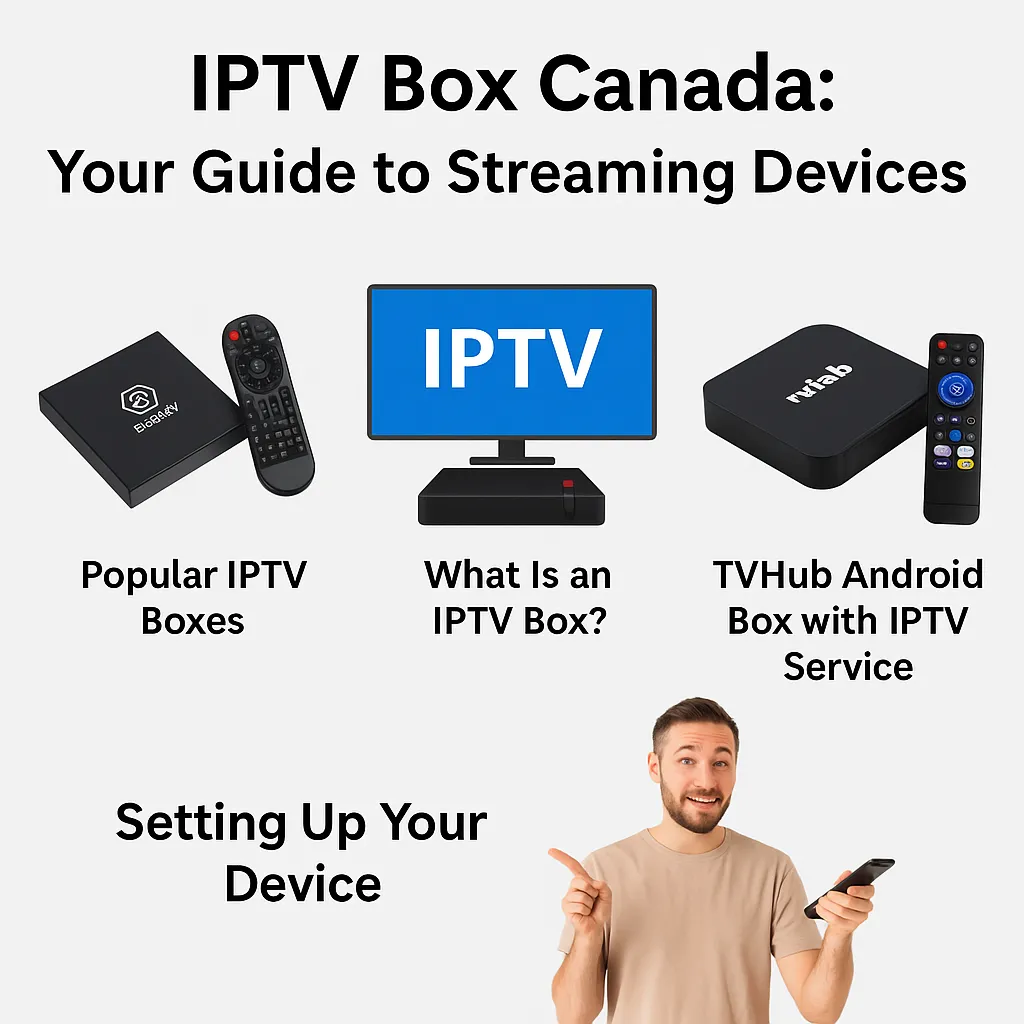
Best IPTV Box Options & Setup in Canada
Looking for a reliable IPTV box or a complete IPTV setup with a box in Canada? This guide explains what an IPTV box is, how it works, and which models give you the best value—whether you’re searching for an IPTV a box, IPTV with a box, or a fully loaded solution.
What Is an IPTV Box?
An IPTV box is a streaming device that connects to your TV and lets you watch IPTV content (live TV, video-on-demand, series) via the internet instead of cable or satellite. These boxes usually run Android or Linux and support popular IPTV apps like IPTV Smarters Pro and TiviMate.
- Connects via HDMI to your TV
- Works with M3U URLs or Xtream Codes
- Supports 4K streaming, EPG (TV guide), and catch-up
- Often includes a remote and Wi-Fi/Ethernet options
Why Canadians Search for IPTV a Box or IPTV with Box
Many users in Canada search for terms like “IPTV a box” or “IPTV with box” because:
- They want a plug-and-play device bundled with IPTV service
- Boxes often come preloaded with apps and subscriptions
- They offer better streaming quality and remote controls than sticks
- Some IPTV providers in Canada only support specific hardware
Top IPTV Boxes You Can Buy in Canada
| Model | Features | Price (CAD) |
|---|---|---|
| TVHub Android Box | Includes 1 year IPTV, Android OS, preloaded apps | $117 optimedia.tv |
| Formuler Z11 Pro Max | 4GB RAM, Android 11, MyTVOnline3, high performance | $210 |
| BuzzTV X5 | 4K support, dual-band Wi-Fi, PVR, Android-based | $190 |
| MAG 524W3 | Linux OS, Ethernet + Wi-Fi, simple UI | $150 |
How to Use IPTV with a Box
- Connect your IPTV box to the TV via HDMI and turn it on
- Connect to Wi-Fi or Ethernet
- Launch your IPTV app (e.g., IPTV Smarters, TiviMate)
- Enter your M3U or Xtream Codes credentials from your provider
- Start watching live TV, on-demand movies, or sports
Why Choose an IPTV Box Over a Firestick?
While Firesticks are popular, IPTV boxes offer:
- Faster performance (more RAM and storage)
- Wired internet option for stable HD/4K streaming
- Numeric remotes for easier channel control
- More freedom to sideload and configure IPTV apps
Trusted Resources
Related Articles
FAQs
Is using IPTV with a box legal in Canada?
Yes. IPTV boxes are legal. Just ensure you use them with a legitimate IPTV subscription.
Do IPTV boxes come with channels included?
Some do, like the TVHub Android Box. Others require you to enter a separate subscription login.
Can I use a VPN with an IPTV box?
Yes, and it’s recommended to protect privacy and bypass geo-restrictions.

